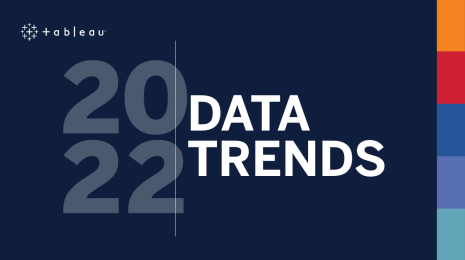How to create and publish accessible dashboards with Tableau
When you create a dashboard in Tableau, you want to make sure that everyone can see and understand the data. This means creating dashboards with accessibility in mind for people with a variety of disabilities, including various vision impairments, learning disabilities, limited movement, or a combination of these.
In Tableau 2018.1, we added accessibility for the most commonly used visualization toolbar items (Undo, Redo, Revert, Refresh, Pause, Share, Download, and Full Screen). This builds upon Tableau’s existing accessibility features—the ability to create and share accessible dashboards with support for assistive technologies like screen readers, keyboard-only operability, and accessible filter types (list and dropdown list filters). And it means that you can now use Tableau Public to host accessible dashboards!
To help you understand more about how you can use Tableau to create and share accessible dashboards, we’ve prepared this guide that explains the basics of accessibility, web accessibility standards, and how to apply those standards in Tableau.
Why create accessible dashboards?
Although there are many reasons to create accessible dashboards (a desire to help people with disabilities, general usability, organizational requirements, and so on), the most common reason is often to follow existing laws. In the United States, Section 508 of the Rehabilitation Act of 1973 establishes accessibility requirements that electronic and information technology used in federal government agencies (including some state and local agencies as well as universities) must meet. The European Union, the United Kingdom, and other jurisdictions have similar laws.
Regardless of the reason you may want to create accessible dashboards, our goal at Tableau is to give you the capabilities needed to create rich, accessible dashboards for publication to Tableau Server, Tableau Online, or Tableau Public.
Adhering to Web Accessibility Standards
The Web Content Accessibility Guidelines, or WCAG, is a set of recommendations and standards for making web-based software content more accessible. It provides guidance to content creators and establishes the technical standards for how web content and assistive technologies interact.
The WCAG defines three levels of accessibility: A, AA, and AAA. Web-based software and content must adhere to the A and AA guidelines for compliance with Section 508 and EN 301 549. The AAA guidelines are quite stringent and not as commonly used.
The WCAG is based around four key accessibility principles (Perceivable, Operable, Understandable, and Robust) with associated guidelines for each:
- Perceivable: Information and user interface components must be presentable to users in ways they can perceive.
In Tableau: The Perceivable principle is the most critical for Tableau dashboards as it includes the guidelines that assist people with visual disabilities.
— All non-text content must have a textual equivalent that serves the same purpose.
— Color is not the only means of conveying information or distinguishing a visible element.
— All text and images of text must have sufficient contrast between the text foreground and background. - Operable: User interface components and navigation must be operable.
In Tableau: Dashboards should be operable with the keyboard and labels of any interactive elements like visualizations, filters, and legends must have titles that are sufficiently clear and self-explanatory to make their operation clear. - Understandable: Information and the operation of user interface must be understandable.
In Tableau: Dashboards must include instructions for any interactivity along with descriptive text that explains the information displayed on the dashboard. - Robust: Content must be robust enough that it can be interpreted reliably by a wide variety of user agents, including assistive technologies.
In Tableau: Dashboards must support interoperability with assistive technologies such as screen-reading software.
Applying the WCAG to create accessible dashboards
Tableau offers a rich set of capabilities for creating web-based dashboards that conform to the WCAG Level A and AA guidelines.
When creating an accessible dashboard, consider accessibility as a requirement for your design in the beginning instead of trying to retrofit existing dashboards. Visit this Tableau Help article to learn best practices for creating accessible dashboards in Tableau.
Watch this video that shows how to apply best practices for making an existing dashboard more accessible.
Watch this demo showing interaction with the dashboard using a screen reader and keyboard-only operation.
After you’ve created your accessible dashboards, publish them to either Tableau Server, Tableau Online, or Tableau Public and then embed the dashboard in a web page that conforms with the WCAG Level A and AA guidelines.
The Tableau help includes more information about creating, publishing, and embedding accessible dashboards. In addition, you can find information about keyboard access for dashboards in the Tableau help.
Learn more
Throughout our accessibility journey, we’ve partnered with Equal Entry, an accessibility consultancy, to help us develop our plan for accessibility and provide us with additional expertise in the area. Equal Entry also performs accessibility testing for us and prepares the official VPAT that documents our accessibility capabilities in accordance with Section 508. If you’d like to try out an accessible web page that includes a Tableau dashboard, please check out Equal Entry’s Tableau Accessibility Demo.
Tableau’s mission has always been to help people see and understand their data. Support for accessibility standards helps us further that mission—ensuring that content produced with our software is accessible to the millions of people living with various disabilities.
相關文章
Subscribe to our blog
在收件匣中收到最新的 Tableau 消息。









